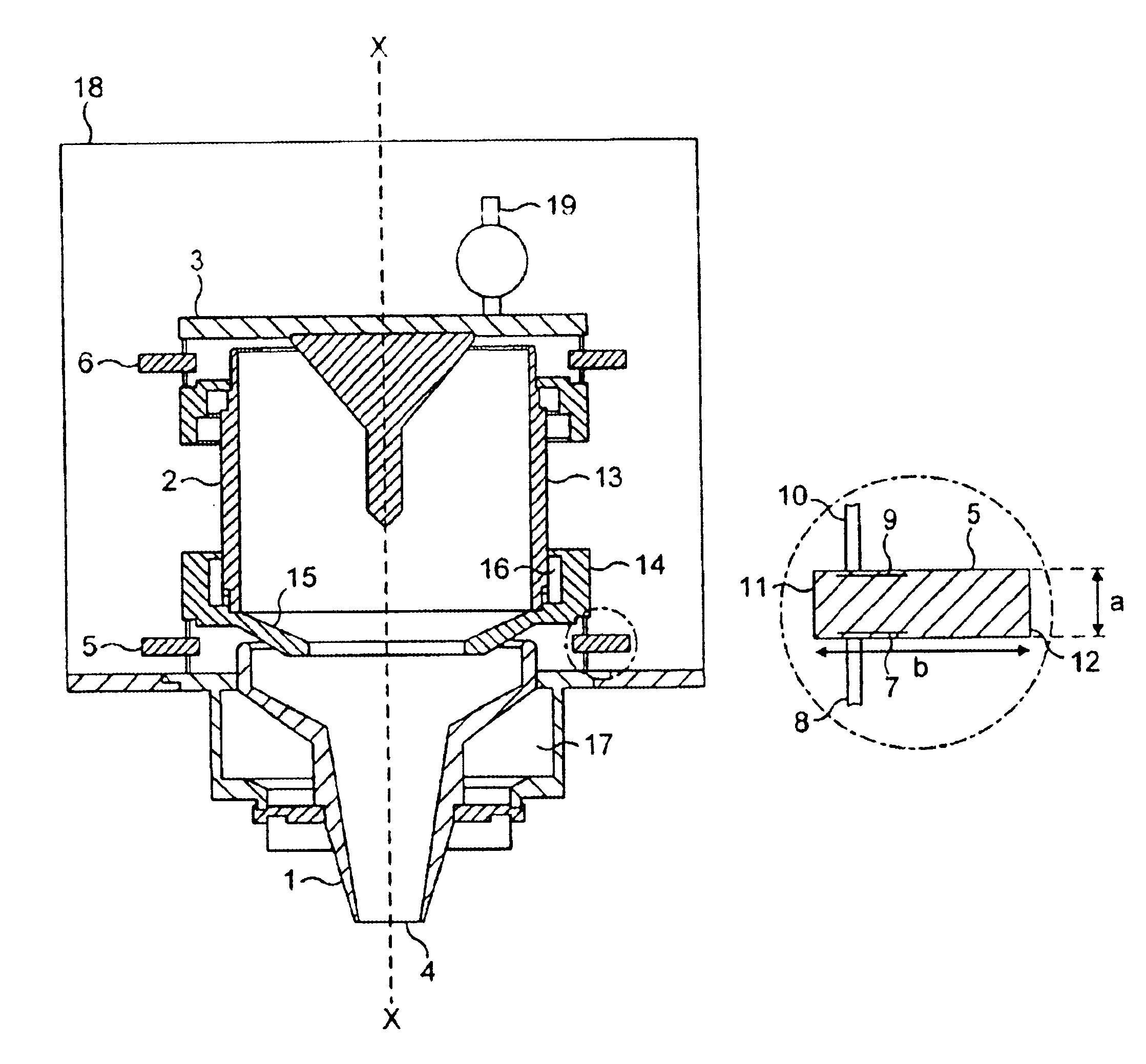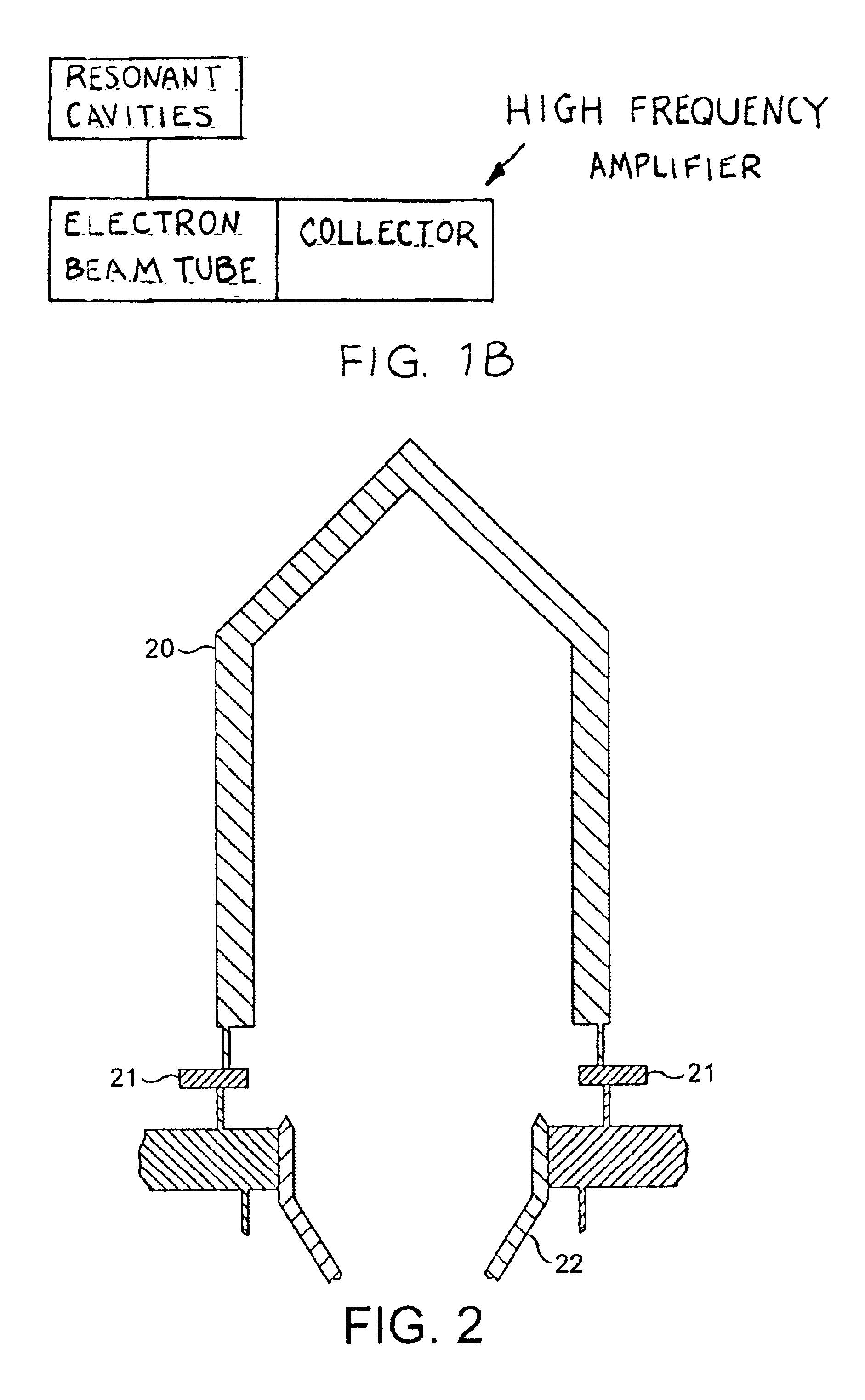Multi-stage collector having electrode stages isolated by a distributed bypass capacitor
a bypass capacitor and collector technology, applied in the direction of klystrons, amplifiers with transit-time effect, transit-tube circuit elements, etc., can solve the problem of rf leakage from the inside of the collector, and achieve the effect of improving energy efficiency
- Summary
- Abstract
- Description
- Claims
- Application Information
AI Technical Summary
Benefits of technology
Problems solved by technology
Method used
Image
Examples
Embodiment Construction
With reference to FIG. 1, a multi-stage electron beam collector includes a first electrode stage 1, second electrode stage 2 and a third electrode stage 3 arranged along a longitudinal axis X—X along which, during use, an electron beam enters the collector at opening 4 of the first stage 1, which also acts as the output drift tube.
A ceramic annular ring 5 is located between the first stage 1 and second stage 2 and another annular ceramic ring 6 between stages 2 and 3. As can be seen in FIG. 1A, the ring 5 includes a region of metallisation 7 on an end face. The metallisation is in electrical contact with a thin cylindrical metal wall 8 which is as at the same potential as the first stage 1 and thus effectively forms part of the first collector stage. Similarly, on the opposing end face of the ring 5 another layer of metallisation 9 is in electrical contact with a thin cylindrical wall 10 which forms part of the second stage 2. The ring 6 between the second and third stages 2 and 3 a...
PUM
 Login to View More
Login to View More Abstract
Description
Claims
Application Information
 Login to View More
Login to View More - R&D
- Intellectual Property
- Life Sciences
- Materials
- Tech Scout
- Unparalleled Data Quality
- Higher Quality Content
- 60% Fewer Hallucinations
Browse by: Latest US Patents, China's latest patents, Technical Efficacy Thesaurus, Application Domain, Technology Topic, Popular Technical Reports.
© 2025 PatSnap. All rights reserved.Legal|Privacy policy|Modern Slavery Act Transparency Statement|Sitemap|About US| Contact US: help@patsnap.com



